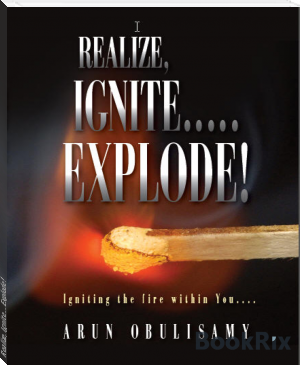Bridge Of Writing (Domination #2) by DeYtH Banger (the false prince series TXT) 📖

- Author: DeYtH Banger
Book online «Bridge Of Writing (Domination #2) by DeYtH Banger (the false prince series TXT) 📖». Author DeYtH Banger
The framework I’m going to share with you today, though, is intentionally based on universal principles that are focused on doing good, and helping people make decisions that are in their own best interest.
To sell more, P.A.S.T.O.R. your customers
Most people associate the term “pastor” with the preacher at church. While this is certainly true in most cases, the original meaning of the word “pastor” was actually “to shepherd.” And what does the shepherd do? He or she cares for, feeds, and protects the flock.
Now, before we go any further, I should address the habit that some marketers have of referring to their customers as their “herd.” It seems to paint an unflattering picture.
This kind of imagery is not what I am invoking here. The actual role of a shepherd is a loving, caring, and protective one. In fact, Jesus, who called himself the “good Shepherd” actually laid down his life for his flock.
I am not suggesting any religious overtones for your copy: what I am suggesting is that you adopt the same loving, caring, and protective role as you write copy for your prospects and customers.
And, as you might’ve guessed, P.A.S.T.O.R. is also an acronym for the major sections of your copy. Here is the explanation:
“P” is for PROBLEM
You must begin by identifying the problem that you are solving. The simplest, most effective way to do this is to describe the problem in great detail.
It’s a psychological principle: the more accurately you can describe your reader’s problem in terms they relate to, the more they instinctively feel that you must have an answer to that problem. Use the reader’s own language, the very words and phrases they use to describe the problem they want to solve.
For instance, if you are writing about fitness and weight loss, you might begin by describing their current situation this way:
You’ve tried every fad diet that’s come along. You’ve started and stopped a dozen different exercise programs, perhaps joined several different gyms, but the truth is you just can’t seem to take the weight off (or keep it off.) Perhaps you’re even feeling a little disgusted with yourself and your inability to control your eating and your weight. You feel like no matter what you try, it’s not going to work.
Remember, you’re not judging their behavior, rather you are describing their experience as it currently is. This means you have to understand their experience as it currently is. You have to know your audience and what they are thinking.
As the great copywriting legend Robert Collier said, you have to “join the conversation that is already taking place in the reader’s mind.”
“A” is for AMPLIFY
The next step is to amplify the consequences of not solving the problem. This is really the key to making sales, and it is probably the most neglected step in the process.
What will motivate people to buy your product, invest in your service, or accept your idea is usually not the beautiful outcome framed in a positive light. It is rather, realizing the cost of not attaining that outcome. In other words: what is it costing them to not solve this problem?
When I’m writing copy about a business improvement program, for instance, I may have the reader walk through a simple exercise like this:
Write down your average monthly income over the last 12 months. Then write down what you want your average monthly income to be. Let’s say that your average income is $5000 per month, and your goal is actually to make $15,000 per month in your business. That means the gap between where you are and where you want to be is $10,000 per month. You’re paying a cost of $10,000 every month you don’t solve this problem.
“S” is for STORY and SOLUTION
Once you have described the problem and amplified the consequences of not solving it, it’s time to share the story of how the problem can be solved.
This will be different depending on your situation. It might be the story of how you yourself finally solved this persistent problem. It might be the story of how you helped a client or customer discover the solution on their own.
It does need to be more than simply a description of what the solution is: telling the story of Bob, the frustrated business owner who was on the edge of bankruptcy, whose family had lost faith in him, and who, out of desperation tried one last idea that saved his business, is infinitely more powerful than simply saying, “One day, Bob figured out the answer.”
It should go without saying, but I will say it just in case: the story must absolutely be true. Don’t make these things up. And if you’re thinking, “But what if there is no story?” I would suggest you just haven’t looked closely enough.
There is always a story to tell.
“T” is for TRANSFORMATION and TESTIMONY
The next key step in writing your copy is to remember that whatever you’re selling, whether it’s a home study program, a book, a seminar, your consulting services — anything at all — what people are buying is not the “stuff,” it’s the transformation.
When people buy the P90X workout program, they did not wake up one morning and say to themselves, “I sure hope today somebody tries to sell me a bunch of DVDs and a wall chart.”
Those things (the DVD’s, charts, etc) are the stuff. What buyers of P90X are actually purchasing is that lean, healthy, youthful physique they want for themselves. The transformation.
It’s also important that you offer testimony, real-life stories of people who have made the transformation that you are teaching, and who have done so successfully. Study the most successful infomercials, and you’ll discover that they consist of about 70% testimonials.
And while most of us will not be writing infomercials, it’s important to remember there are three questions people are asking when you sell them coaching, consulting, or instruction about anything. The questions are:
Has this person been able to do what they are describing for themselves? Has this person been able to teach other people to achieve the results they are describing? Will this person be able to teach me how to achieve these results?“O” is for OFFER
So far, you have defined the problem, clarified the cost of not solving it, told the story of the solution, and helped your reader visualize the transformation through testimonials from others just like themselves.
Now is the time to describe exactly what you are offering for sale.
This is the section of your copy where you lay out your offer. You can even create a subheading for the section called something clever like, “Here’s Exactly What You Get.”
Make certain that you focus 80% of your copy on the transformation itself. You do have to talk about the deliverables (the class schedule, the DVDs, etc.), but that should only occupy about 20% of your copy in this section.
Just remember that as you describe the deliverables in the offer section, you must keep tying them back to the transformation and benefits your buyers will receive.
So instead of simply writing that the buyer will receive “8 DVDs, each containing a 45 minute workout session”, you might instead write that they will receive “8 DVDs that each contain a body-sculpting, fat-burning transformational work out that will help you craft the lean muscle you really want.”
“R” is for RESPONSE
This is one of the areas where copy tends to often be the weakest: the response request. We are asking the customer to buy.
At this point, you should not be shy about making this request. You should tell the customer exactly what to do in order to get your program, your consulting, your book, etc. You should remind them why it’s important o do so.
I often write copy similar to this:
You’re at the point of decision. You can either continue down the path of least resistance, the path you have already been traveling, or you can choose the road less traveled. The path of least resistance will probably result in you getting the same outcomes you’ve always received. But if you want something different to happen, if you want to change the direction of your health (or your relationships, or your finances, etc.) you’re going to have to do something different. Make a new choice, and pursue your new outcome.
And then I will write very specific, directive copy telling them exactly what to do next: “Click the button below, fill out the order form, and we will immediately ship your entire package to you. It will contain everything you need to get started.”
Some people shy away from strong language like this, but the fact is, if you truly believe that you have a solution that will solve a problem for people, why on earth would you not be as direct as possible in telling them how to get that solution? In fact, aren’t you doing them a disservice by not making the strongest case possible?
What to do now
My suggestion is that you use this framework to write or rewrite your sales copy. The key to making this approach to writing sales copy successful is the having the mindset of being a “pastor”.
If you apply the principles of being a shepherd to your readers, and you follow the sequence of the P.A.S.T.O.R formula, my prediction is you will experience more sales, more profits, and more happy customers… more often.
The Importance of Your Book Cover Design: An Interview with Pamela Webberby Jeff Goins
Remember that old saying — “You can’t judge a book by its cover”? Well, it’s just not true. You can judge a book by its cover, and you should.

To get to the heart of why design plays such a big role in an author’s success, I invited the Chief Marketing Officer of 99designs, Pamela Webber, to join us.
99designs is an online community of hundreds of thousands of graphic designers who help small business owners and entrepreneurs get their design needs met for everything from logos to book covers to packaging.
It works through a contest model. To start, you submit a creative brief explaining what you envision for your project. Designers who want to participate then read your brief and create something for you. Next you select which design you like best and agree to work with that designer exclusively as you finalize your project.
How to Really Get Your Writing Done
Everyone wants to write a book, but few people ever do. Why is





Comments (0)